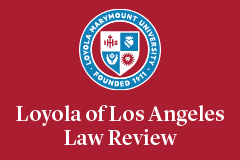Abstract
The U.S. Supreme Court’s 2004 Crawford v. Washington decision drastically altered the long-standing Confrontation Clause jurisprudence, refocusing the constitutional inquiry on the testimonial nature of a witness’s statement but leaving for another day any effort to spell out a comprehensive definition of the term “testimonial.” Thus began the current line of Confrontation Clause cases, each of which sought to clarify the Sixth Amendment’s confrontation protections but arguably clouded any clarity that the case before it brought. In 2009, the Court decided Melendez-Diaz v. Massachusetts, in which it held that a forensic laboratory report prepared for a criminal trial is “testimonial” and that it therefore triggers the Confrontation Clause. Most recently, in 2010, the Court decided Bullcoming v. New Mexico and answered the question that Melendez-Diaz left open: if a forensic laboratory report triggers the Confrontation Clause, who must provide the live, in-court testimony? In a controversial 5–4 decision, the Court held that the analyst who actually conducted the forensic test and certified the report must take the stand, and that a so-called surrogate witness does not satisfy the constitutional requirement. This Comment suggests that the Court accurately assessed the fallibility of forensic science and correctly decided Bullcoming in a manner that was consistent with the Confrontation Clause’s purposes.
Recommended Citation
Megan Weisgerber,
Confronting Forensics: Bullcoming v. New Mexico and the Sixth Amendment,
45 Loy. L.A. L. Rev. 613
(2012).
Available at: https://digitalcommons.lmu.edu/llr/vol45/iss2/11



